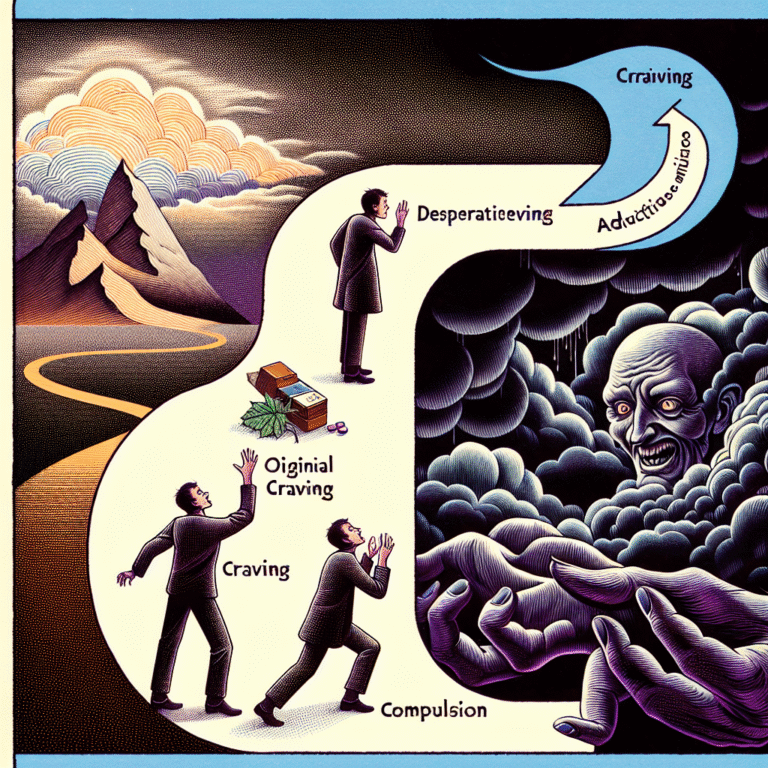Is Your Attachment Style Holding You Back? Discover the Hidden Influences on Your Relationships
Introduction
In the intricate tapestry of human connections, the threads of attachment style weave the patterns that define our relationships. Have you ever wondered if your attachment style is holding you back? It’s a profound question that has the power to transform not only how you relate to others, but also how you view yourself. From childhood experiences to adult partnerships, our attachment styles shape our interactions in subtle yet profound ways. In this article, we will delve deep into the hidden influences of attachment styles, explore their impacts on our relationships, and offer insights that can help you break free from limiting patterns.
Understanding Attachment Styles
To grasp the relevance of attachment styles, it’s essential first to define what they are. Rooted in the work of developmental psychologist John Bowlby and further developed by Mary Ainsworth, attachment theory identifies four primary styles:
-
Secure Attachment: Individuals with this style feel comfortable with intimacy and independence, allowing them to balance relationships effectively.
-
Anxious Attachment: Those with anxious attachment often seek high levels of intimacy and can display clinginess or hyper-vigilance about partner availability.
-
Avoidant Attachment: Avoidant individuals tend to prioritize self-sufficiency and often keep emotional distance from others, fearing vulnerability.
- Disorganized Attachment: A mix of inconsistent behaviors, disorganized attachment often stems from trauma or neglect during childhood, leading to chaotic relationships.
As we explore the question, "Is your attachment style holding you back? Discover the hidden influences on your relationships," keep these types in mind as we examine how they can impact every aspect of your emotional life.
The Impact of Attachment Styles on Relationships
Secure Attachment: The Gold Standard
Case Study: Meet Sarah and Tom. They’ve been married for five years and build on their relationship’s trust and mutual support. Sarah describes their connection as fulfilling and grounded.
Analysis: Sarah and Tom exemplify a secure attachment style, which fosters strong, resilient partnerships. Their effective communication, ability to navigate conflict, and mutual respect allow them to thrive.
Anxious Attachment: The Struggles Within
Case Study: Lisa often finds herself feeling unworthy in her relationships. Even in a loving partnership, she frequently worries about her partner’s commitment.
Analysis: Lisa’s anxious attachment style leads to a cycle of frustration and insecurity that can sabotage her relationships. By grasping that her fears are rooted in past experiences, she can begin to address and heal these wounds.
Avoidant Attachment: The Fortress
Case Study: Mark values his independence above all else. When his girlfriend, Emma, seeks more emotional intimacy, he often retreats, leading to tension in their relationship.
Analysis: Mark’s avoidant attachment style creates barriers that inhibit closeness. Recognizing this pattern can empower him to take small steps toward vulnerability, thereby improving his connections.
Disorganized Attachment: The Emotional Rollercoaster
Case Study: Jenny grew up in an unstable home environment, leading her to approach relationships with trepidation and inconsistency. She both craves intimacy and fears it.
Analysis: Jenny’s disorganized attachment manifests as tumult in her relationships. Understanding the origins of her attachment style can be a gateway to healing and building healthier connections.
Recognizing Your Attachment Style
How can you identify your attachment style? Here are some self-reflective questions to consider:
- How do you typically respond during conflicts?
- Do you feel comfortable expressing your emotions to your partner?
- What patterns can you identify in your past relationships?
Reflecting on these questions can help clarify if your attachment style is holding you back.
The Cycle of Attachment Styles: How They Influence Each Other
It’s essential to recognize that attachment styles can create cycles in relationships. For instance, an anxious partner might trigger an avoidant counterpart, leading to a push-pull dynamic that can be challenging to break.
Table: The Cycle of Anxious and Avoidant Attachment Styles
| Anxious Partner | Avoidant Partner | Outcome |
|---|---|---|
| Seeks closeness | Withdraws for space | Tension and misunderstandings |
| Exhibits clinginess | Feels suffocated | Escalates withdrawal |
| Expresses needs | Becomes defensive | Communication breakdown |
Understanding these cycles can help you navigate your relationships more effectively.
How to Transform Your Attachment Style
Self-Reflection and Awareness
Awareness is the first step toward change. By recognizing your style and its implications, you can start to break negative patterns.
Therapy and Support
Engaging with a therapist knowledgeable in attachment theory can provide invaluable insights and coping strategies tailored to your needs.
Communication Skills
Healthy communication can dramatically mitigate the effects of insecure attachment styles. Techniques such as "I" statements can improve your interactions.
Building Trust
In relationships, actively demonstrating reliability and transparency goes a long way in fostering a secure attachment environment.
Mindfulness and Emotional Regulation
Practicing mindfulness can help you remain present and responsive in emotional situations, rather than reactive.
Encouragement for Change
As you reflect on whether your attachment style is holding you back, remember that transformation is possible. Embracing your past while actively seeking to improve is a journey worth taking. Change takes time, but with ongoing effort and the right mindset, you can cultivate fulfilling, secure relationships.
Conclusion
Understanding and addressing your attachment style can profoundly impact the quality of your relationships. Recognizing the hidden influences of your attachment style not only equips you with the tools to foster healthier connections but also encourages personal growth. Is your attachment style holding you back? Discovering the answer to this question can pave the way for a more fulfilling emotional life.
FAQs
1. What is my attachment style?
Your attachment style can be assessed through self-reflection, relationship patterns, and even standardized questionnaires. Engaging with a mental health professional can provide deeper insights.
2. Can my attachment style change over time?
Yes, attachment styles can evolve through personal growth, new experiences, and therapeutic interventions.
3. How does attachment style affect parenting?
Parents’ attachment styles often influence their children’s attachment behaviors. Ensuring a secure environment can foster healthier attachment in the next generation.
4. What if my partner has a different attachment style?
Recognizing and understanding each other’s attachment styles is vital. Open communication and willingness to adapt can harmonize differences.
5. How can I support a partner with insecure attachment?
Offer consistent reassurance, engage in open dialogue, and respect their emotional boundaries while gently encouraging growth.
By exploring these themes and questions, you can carve a path toward healthier, more rewarding relationships, ensuring that your attachment style becomes a source of strength rather than a hindrance. Embrace this journey, and watch your connections flourish!















